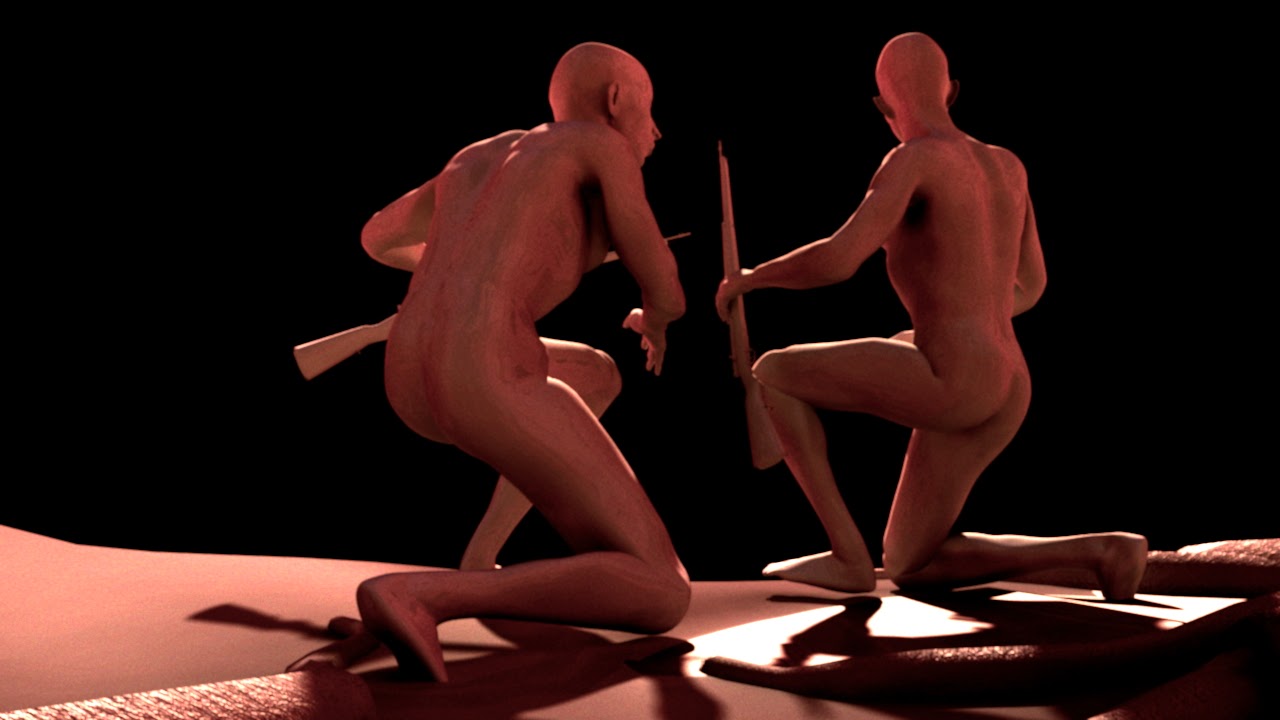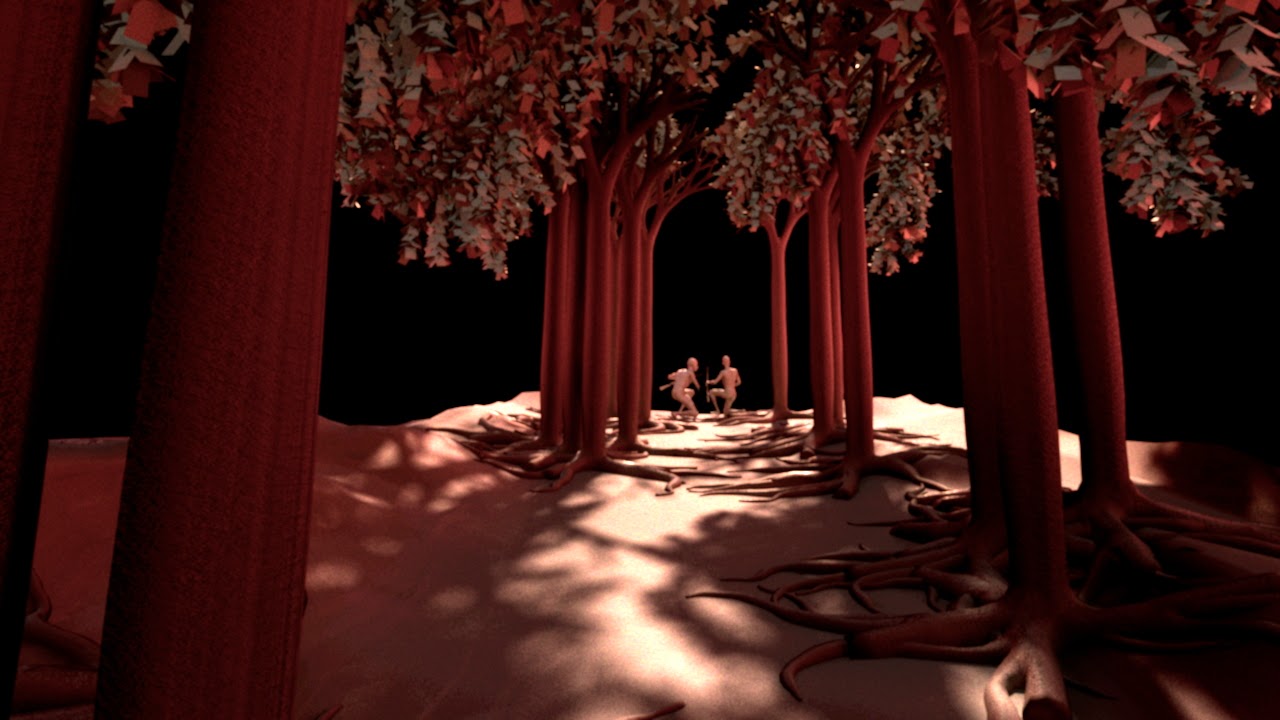I was been briefed on the tasked client project on the first day of FYP. Understanding, I will be working on a World War II(WW2) theme project given by the national heritage board (NHB).
The next day my lecturer held a small meet up session discussing on more details of the project . This will be a collaborative project between the students from motion graphic course and us, visual effect students. Our main task is to create a full CG opening and closing sequence, transiting in and out of a 2D animation short, Battle of Bukit Chandu. Here is the map where it took place.
The motion graphic students have plan and drew storyboards on the sequences we are required to do. Much of the camera angles and movements aren't confirmed yet. They did have some animatics done for preview, but still it isn't clear enough. However, after further discussions, we did have a better idea of what we are trying to achieve.
Now that I know that we have to create a full CG war scene from scratch. This means lots of asset needs to be prepared. The good news is that all objects and soldier characters will be stationary, hence no animation is needed.
Planning begins right away.
1. Analyzing various scenes.
2. Listing down a general category of assets needs to be prepared.
3. Standardize a naming convention for both asset and scene files to reduce or avoid confusion.
4. Assigning everyone individual tasks on asset preparation.
Jovial - assigned on rifle asset creation
Jing Yi - bullet and bomb asset
Jesmine - badge asset
Zuridi - sand bag asset and blood simulation
Jikian - rifle knife and procedural barbed wire asset, helping on L-system tree creation
Jeremiah - in charged on most terrain creation
I personally undertakes the water, smoke, leaves simulation and in-charged on lighting as well as the soldier characters asset design and creation. After analyzing the storyboard, there are minimum 3 type of soldiers we have to create. Then duplicate them, posting and positioning in various location.
1. Malay regiment soldier
2. Japanese soldier
3. Punjabi Japanese soldier
All of them will have different looks and uniforms. Researching for various reference on each of the soldier types. Having a idea on which part of the military uniform design or accessories is really necessary and what could be omitted. Even after some simplification on designs, there are still high amount on details needed to be modelled out.
The largest challenge on creating those soldier asset is the modelling process. Sculpting is essential to create the human soldiers. However, none of our FYP team members have any experience with software such as Zbrush. Hence, I have to pick up and learn Zbrush from the beginning. With little knowledge just learned from tutorials I have to create human figure right away.
I decide to begin with the Japanese soldier. Helping me to get started on the soldier asset creation, I begin sculpting in Zbrush based on a default human shape model build in the software. From there I slowly sculpt and deform the default human to make it looked like a Japanese. This is the first time I am trying to sculpt any human, I did my best on using the tools I have just learned in Zbrush.
Next, the Malay regiment soldiers. The iconic soldier of the Malay regiment was Adnan Bin Saidi. That's why I decided to model the Malay soldier according to his facial features.
Considering the Malay regiment are much more skinny I have sculpted the body in that manner. Due to the skinny factor, I have to use the transpose tool in Zbrush to re-position the arms and legs to sculpt the area of underarm and between legs.
I was told by my lecturer to begin posing the character at this stage. This is to create a animatic previs for a better visualization of the camera movement. At first, I try posing in Zbrush using the transpose tool. Minor posing movement works fine using this method. However, drastic posing of character will not work very well, as without proper weightpainting, severe stretching of polygons will happen. Fixing those polygonal scratching to will be very hard and time consuming, or basically means to rescrulpt from scratch. This will be extremely ineffective as we have dozens of soldier characters require to be posed in position.
The Zsphere technic is to create a series of linked weighting points that act like skeleton, enable us to pose the character. Same as the transpose technic, it has its own limitation in posing characters. Drastic posing will not work as severe weird distortion will occur with larger limp movement. Eventually, I have to give up posing in Zbrush.
Where the alternative is to create a rig for every soldier character. This would be more technically challenging and tedious at the same time due to the weight painting process. I have used Mixamo autorig to help create a basic human rig to get started. While the model isn't rig and weight painted perfectly, but I would just use this for the previs posing purpose.
I have done some adjustment with the rifle asset modeled by my team members. With these elements, I could start test posing in the actual scene.
A rough terrain have been done by Jeremiah with the help of Jikian. I basically take over the scene file and start posing and position the Malay regiment soldiers. With some discussion and tweaking of camera movements, we then playblast the previs to show to our lecturer.
Next week, I will began the clothes creation as well as the test lighting for the scene.


























.jpg)
.jpg)









